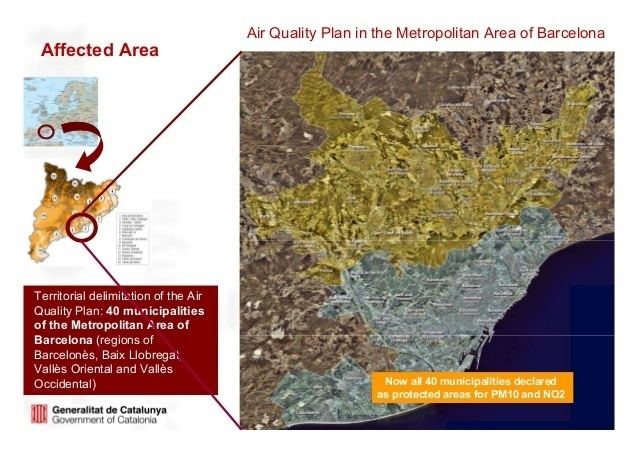GDP 2008 | Time zone CET (UTC+1) Metropolitan area 4,268 km² | |
 | ||
Nominal $177 billion (4th in EU) | ||
Escania sunsundegui sb3 articulated bus barcelona metropolitan area
The Barcelona metropolitan area (Catalan: Àrea metropolitana de Barcelona, Spanish: Área metropolitana de Barcelona) is a metropolitan area in Catalonia, north of Spain, centered on the city of Barcelona. With a population of around 5 million, it's the most populous metropolitan area on the Mediterranean coast, and one of the largest in Europe.
Contents
- Escania sunsundegui sb3 articulated bus barcelona metropolitan area
- Volvo sunsundegui astral articulated bus barcelona metropolitan area
- Overview
- The Zones
- Polynuclear Urban Region
- References
Volvo sunsundegui astral articulated bus barcelona metropolitan area
Overview
The urban area — core of metropolitan area of Barcelona has a population of 4,604,000 being the sixth-most populous urban area in the European Union after Paris, London, Ruhr area, Madrid and Milan. The Larger Urban Zone has a population of 4,440,629 according to Eurostat.
As stated by the Department of Economic and Social Affairs of United Nations, the metropolitan area of Barcelona has a population of 5,083,000, according to the Organization for Economic Cooperation and Development it has a population of 4,900,000 and according to the Eurostat it has a population of 5,375,774. According to Idescat it has a population of 5,029,181, according to BlatantWorld.com it has a population of 4,992,778 and according to World Gazetteer it has a population of 5,068,252.
The Zones
Polynuclear Urban Region
According to the EURBANET project by Delft University of Technology it speaks about polynuclear urban region when there exists a series of important urban centers that relate intensely among them and to the exterior. This one is the case of bordering zones to the urban region that they extend around the cities of Tarragona and Girona. They are areas with a great economic dependence and services to the capital. They are narrow corridors well communicated to Barcelona, both by highway and railroad, which there fuse the metropolitan areas of these cities with the urban region. The PUR of Barcelona would rely on so 6,103,221 people in an area of 6,005 km2.
Barcelona Polynuclear Urban Region is conceived as "isolated islands of significant growth" which, may develop into zones of global economic integration. This is, however, not intended to happen at the cost of the global competitive position of the present core area.
